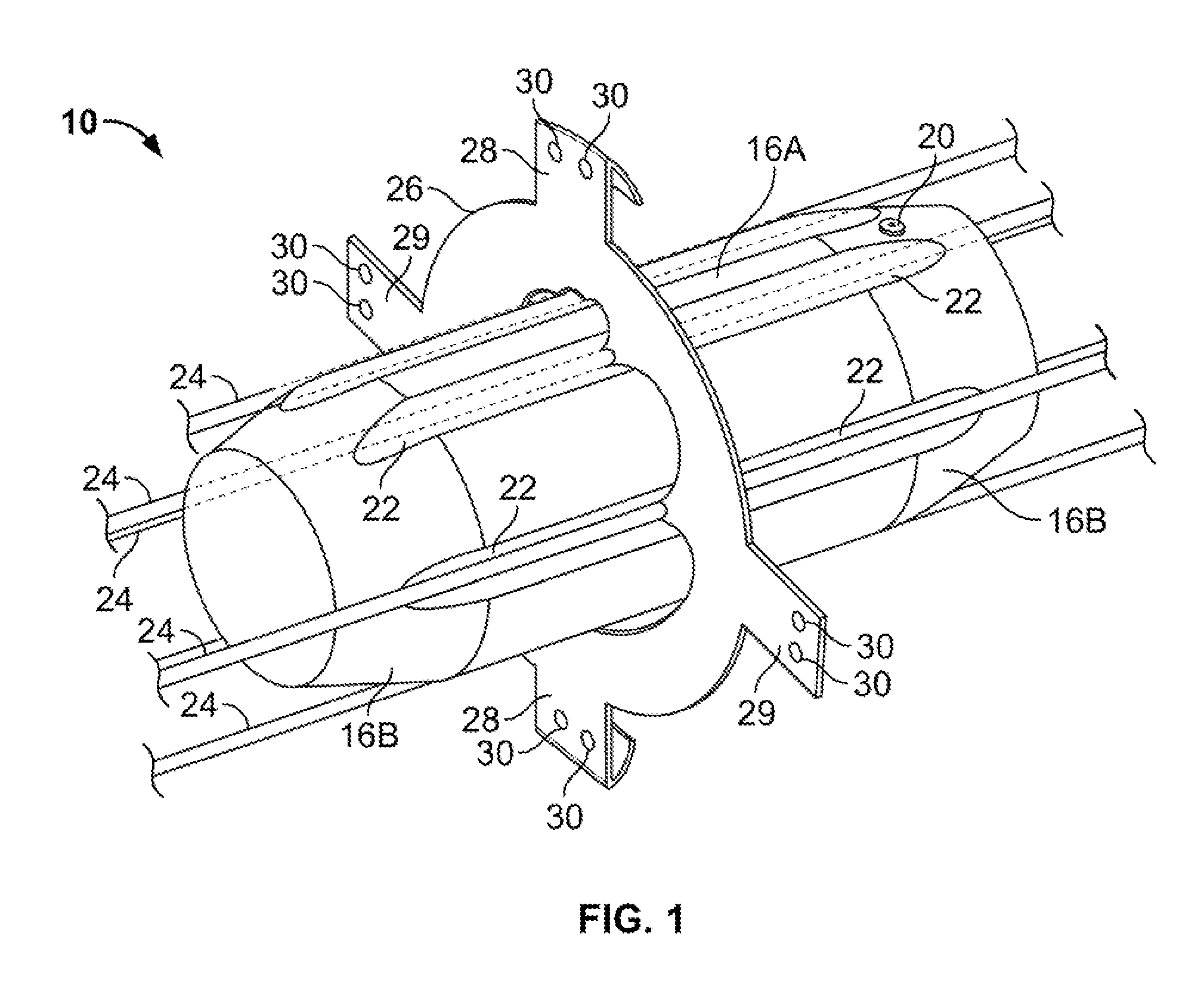Generator and method for generating electricity from subsurface currents
a technology of subsurface current and generator, which is applied in the direction of electric generator control, machines/engines, mechanical equipment, etc., can solve the problems of confined mechanical devices that will eventually undergo fatigue and break, and the machine at these locations requires huge capital investments,
- Summary
- Abstract
- Description
- Claims
- Application Information
AI Technical Summary
Benefits of technology
Problems solved by technology
Method used
Image
Examples
Embodiment Construction
[0030]Referring to FIGS. 1-3, shuffle 10 has a generally cylindrical midsection 16A between tapered frustoconical ends 16B (collectively referred to as case 16). Cylindrical midsection 16A has a central chamber 18A with six cylindrical cavities 18B circumferentially and equiangularly spaced about the longitudinal axis of shuttle 10.
[0031]Cylindrical cavities 18B each hold a cylindrical magnetic element 12. Elements 12 are rods made of rare earth magnets (or other magnetic material) oriented with all their north-south poles oriented in the same way. Magnetic elements 12 are in the illustrated embodiment approximately 4 inches (10 cm) in diameter and 3.5 feet (1 m) in length. In some embodiments, magnetic elements 12 may have a different size and shape, such as triangular or rectangular prisms with a different overall size. Consequently, cavities 18B may have alternative complementary shapes and sizes to accommodate different magnetic elements.
[0032]The outer surface of midsection 16A...
PUM
 Login to View More
Login to View More Abstract
Description
Claims
Application Information
 Login to View More
Login to View More - R&D
- Intellectual Property
- Life Sciences
- Materials
- Tech Scout
- Unparalleled Data Quality
- Higher Quality Content
- 60% Fewer Hallucinations
Browse by: Latest US Patents, China's latest patents, Technical Efficacy Thesaurus, Application Domain, Technology Topic, Popular Technical Reports.
© 2025 PatSnap. All rights reserved.Legal|Privacy policy|Modern Slavery Act Transparency Statement|Sitemap|About US| Contact US: help@patsnap.com



